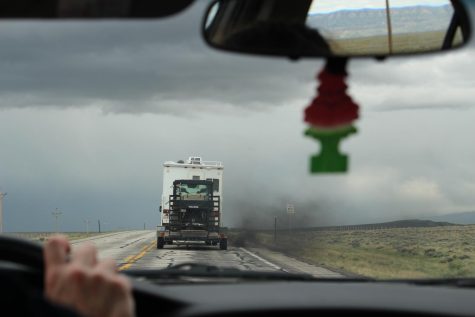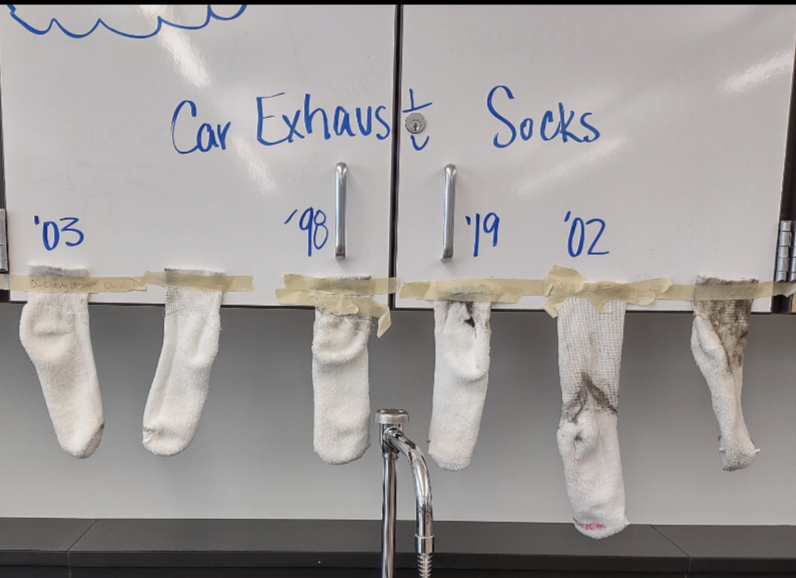Students of Environmental Science (IB) Study Car Exhaust
Exhaust gases observed and measured by students during the experiment.
From the final results of the car exhaust experiment, these samples of solid particulate matter hang below the label of their year.
October 28, 2021
Environmental Science classes are dedicated to educating students on current events that are affecting the economy and the people, striving towards opening one’s mind to the future that isn’t so far away. In Mrs. Edward’s IB class, students are focusing on the effects of extra CO2 cycling through the Earth’s atmosphere. This class got together on a Tuesday to participate in a few experiments to determine such numbers. One of the most prominent and effective experiments was observing the car exhaust from varying vehicles to determine which model years polluted more. This brought IB students outside for a driving test. Students with a valid license and a working vehicle were instructed to meet up at the emergency parking line with their teacher, each taking a quick turn to drive their vehicle around with a sock over the tailpipe.
These socks were used to study the more visible signs of pollution and the result it has on acidic rain – pollution that can be cycled through the Earth’s water, air, and clouds as it spreads further out. The thicker the fumes of gasoline become, the more solid particulate matter (which appear as black stains) becomes captured in the socks’ thick material. With each vehicle originating from a different year, some going as far back as the 1980s, the results show a lot more than just the amount of CO2 starting to cycle around the atmosphere. It also shows what cars have better emissions; older models or newer models. These models produced from this experiment will later help the students to learn more about how all of this pollution travels and how.
When this quick study was completed, students found that newer models certainly had better emissions compared to older models. One such example is a car from the 2000s selection, which shows the least amount of black solidified pollution hanging onto the sock attached to its exhaust pipe. These results are for the cars that are still spreading even more pollution as time continues, and the same pollution collects into the clouds to become acidic rain. Acidic rain affects photosynthesis, plant growth, and kills certain plants/bacteria that are necessary when it comes to supporting the human race. Knowing what’s going on is the first step to fixing a problem that can affect later generations.


